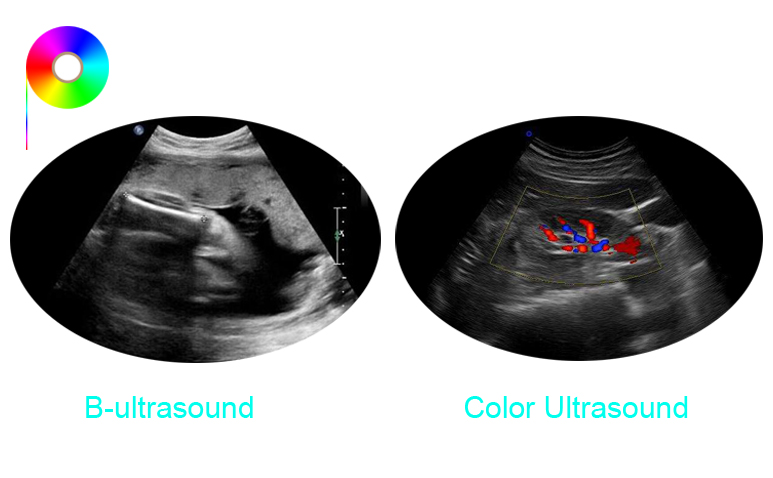What Is the Difference Between B-ultrasound and Color Ultrasound?
- 2020-01-01
- Original
- 3539
B-ultrasound and color ultrasound(also called color Doppler ultrasound) are the most basic and widely used diagnostic techniques in medical imaging examination. The working principles are the same: they are two-dimensional plan views obtained by sound wave reflection.
What is B-ultrasound?
B-ultrasound is also called real-time two-dimensional ultrasound, which uses the difference in the absorption of ultrasound by human tissues to display the normal anatomy of the human body on the display screen. It is a black and white image. It can reflect information on different sections of the human body, and diagnose diseases such as liver and splenomegaly, common bile duct dilatation, and intrahepatic cysts based on abnormal echoes in normal tissue structures.What is a color ultrasound?
Color ultrasound is called "Color Doppler Ultrasound". The Color Doppler is a color Doppler blood flow imaging system based on B-ultrasound. That is, on the basis of B-ultrasound, the color signal is color-coded by the color processor to display the direction and velocity of the blood flow and form an image of the blood flow state. It can visually display the distribution, running, direction of blood flow, blood flow resistance and blood flow speed of blood vessels.
Therefore, the difference between B-ultrasound and color ultrasound is in the examination of blood flow. Compared with a single black-and-white B-ultrasound, color ultrasound has more functions, the clarity of color ultrasound is greater than that of B-ultrasound, and the scope of examination is wider, which can increase the accuracy of diagnosis. Ultrasound examination has been recognized as the first choice for biliary system diseases.
At present, the main examination scope of B-ultrasound is applicable to organs without gas in the abdominal cavity, such as liver, gall, spleen, urinary system, uterus, accessories, and fetus. Because color ultrasound adds color Doppler on the basis of B ultrasound, the equipment and performance of color ultrasound have advantages over B ultrasound. Compared with B-ultrasound, color ultrasound has three major advantages:
1. The inspection range is relatively wide: all ultrasounds that can be seen by B-ultrasound can be seen, and those that cannot be seen by B-ultrasound can also be inspected, like superficial organs, heart, and blood vessels;
2. The color Doppler ultrasound has a high resolution: it can find small lesions and small structures inside the lesions, and these cannot be detected by B-ultrasound, which means that the high-resolution color Doppler ultrasound can improve the diagnosis rate;
3, color Doppler ultrasound can detect blood flow: according to the blood flow of the lesion to determine the nature of the lesion. Based on the color Doppler ultrasound, three-dimensional and four-dimensional images have been developed to make the image of the inspected part more three-dimensional and dynamic, which makes it easier to understand.
Clinically, if it is for normal physical medical examination, B-ultrasound can be used and it is enough. However, if it is due to physical conditions, which system or part has abnormal clinical symptoms, color ultrasound examination is recommended. Under high-resolution color ultrasound examination, the internal organs and organs will be checked very clearly to avoid clinical misdiagnosis will increase the diagnosis rate.
Not all diseases need color ultrasound!
Such as cholecystitis, gallbladder stones, bile duct stones, kidney stones, ureteral stones, bladder stones, fatty liver, liver cysts, renal cysts, pleural fluid, ascites, pericardial effusion quantification and localization, color Doppler ultrasound is not necessarily better than black and white B-ultrasound. The color Doppler ultrasound is only needed when the blood flow conditions of the heart, blood vessels, parenchymal occupying lesions, and thyroid and breast are required to be displayed.
White base medical film is the carrier of B-ultrasound and color ultrasound. Selecting a high-quality white base medical film is more conducive to obtaining clearer imaging results. Welcome to contact PNP Film for requiring sample so as to sample testing or further discussion on the medical film.

